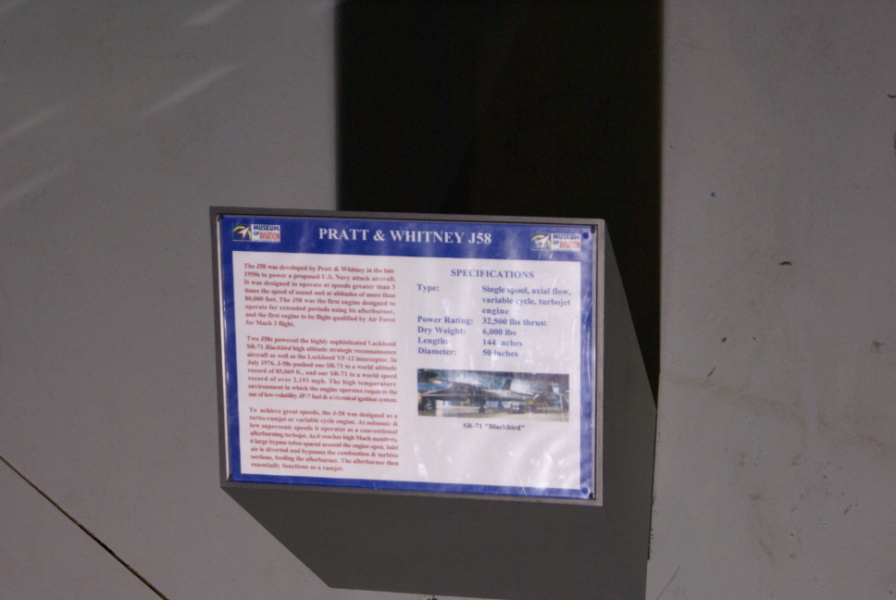| Prev |
heroicrelics.org Museum of Aviation Site Index J58 (SR-71) Engine Gallery |
Next |
dsc64066.jpg
The sign accompanying the J58 engine. It reads
Pratt & Whitney J58
The J58 was developed by Pratt & Whitney in the late 1950s to power a proposed U.S. Navy attack aircraft. It was designed to operate at speeds greater than 3 times the speed of sound and at altitudes of more than 80,000 feet. The J58 was the first engine designed to operate for extended periods using its afterburner, and the first engine to be flight qualified by the Air Force for Mach 3 flight.
Two J58s powered the highly sophisticated Lockheed SR-71 Blackbird high altitude strategic reconnaissance aircraft as well as the Lockheed YF-12 interceptor. In July 1976, J58s pushed one SR-71 to a world altitude record of 85,069 ft., and our SR-71 to a world speed record of over 2,193 mph. The high temperature environment in which the engine operates requires the use of low-volatility JP-7 fuel & a chemical ignition system.
To achieve great speeds, the J58 was designed as a turbo-ramjet or variable cycle engine. At subsonic & low supersonic speeds it operates as a conventional afterburning turbojet. As it reaches high Mach numbers, 6 large bypass tubes spaced around the engine open. Inlet air is diverted and bypasses the combustion & turbine sections, feeding the afterburner. The afterburner then essentially functions as a ramjet.
SR-71 "Blackbird"
SPECIFICATIONS Type: Single spool, axial flow, variable cycle, turbojet engine Power Rating: 32,500 lbs thrust Dry Weight: 6,000 lbs Length: 144 inches Diameter: 50 inches

| Time picture taken | Sun Jun 21 11:28:36 2009 |
| Location picture taken |
Century of Flight (Hangar 2) Museum of Aviation Warner Robins, Georgia |
| Prev |
heroicrelics.org Museum of Aviation Site Index J58 (SR-71) Engine Gallery |
Next |